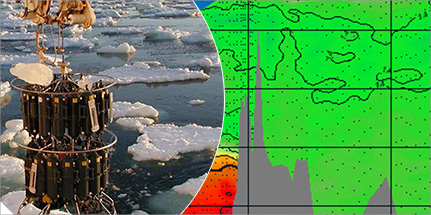Environment: Innovative tools for the largest European Marine Data Network
17/11/2016
SeaDataCloud, a EU funded project within Horizon 2020, having the objective of improving the consultation of and participation in SeaDataNet, the large IT platform ensuring long - term data archiving of multidisciplinary marine data in the sector of physical oceanography as well as chemistry, geology, geo-physics and biology, kicked off in November 2016.
 SeaDataNet, a wealth of oceanographic data, was made available by 100 data centres in 34 European countries through the previous projects SeaDataNet I and II, from which SeaDataCloud evolved and advanced, thanks to an improvement of data access procedures.
SeaDataNet, a wealth of oceanographic data, was made available by 100 data centres in 34 European countries through the previous projects SeaDataNet I and II, from which SeaDataCloud evolved and advanced, thanks to an improvement of data access procedures.
ENEA will develop several activities and coordinate the communication and diffusion also through advanced IT tools and innovative solutions. In the next months an ad hoc plan envisaging targeted actions will be developed by a team of experts at the ENEA Santa Teresa Research Center.
In order to provide users with an immediate understanding of the information contained in the portal and simplify its reuse for different purposes than those originally intended, common data quality control protocols were applied and a common vocabulary adopted. Although most data is freely available, part of it may require an access negotiation with the data producer.
Furthermore, the SeaDataNet portal provides oceanographic maps of the European area, information on organizations providing marine data, details of monitoring and marine research programs and the catalogue of the “Cruise Summary Report”, logbooks reporting on oceanographic cruises for data and samples collection.
The ENEA Division “Protection and valorization of territory and natural heritage” within the Department “Sustainability of productive and territorial systems” conducts research for the protection and valorization of marine and coastal ecosystems and the implementation of tools and technologies fort their sustainable management. A prerequisite for implementing these activities is large data availability. Infrastructures such as SeaDataCloud allow to use data obtained from different research and monitoring programs for several objectives and fully use, share and valorize the information, reducing costs and providing new research opportunities.
For more information log on to:
Leda Pecci¸ ENEA – Laboratory of Biodiversity and Ecosystems Functioning - leda.pecci@enea.it
